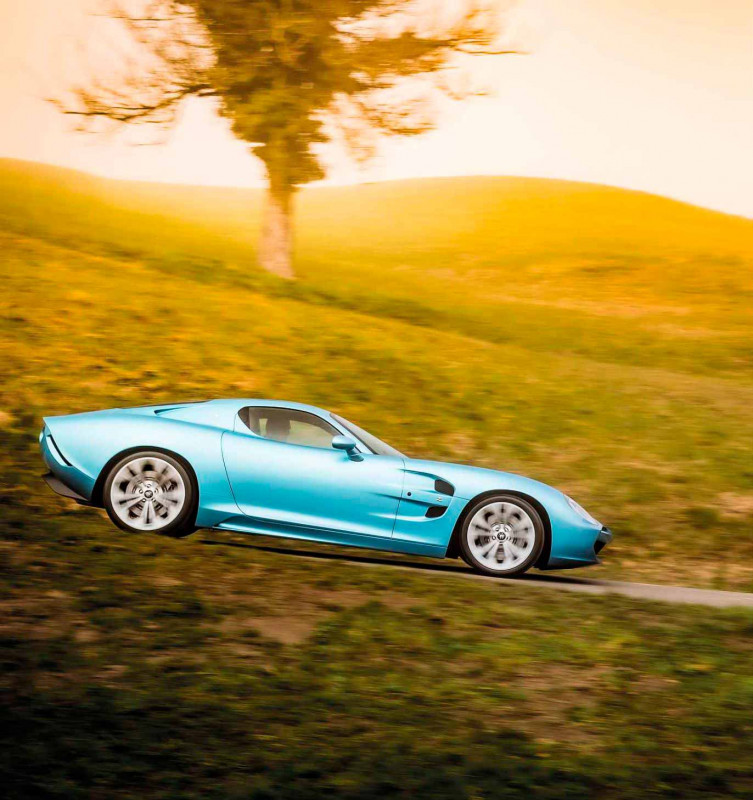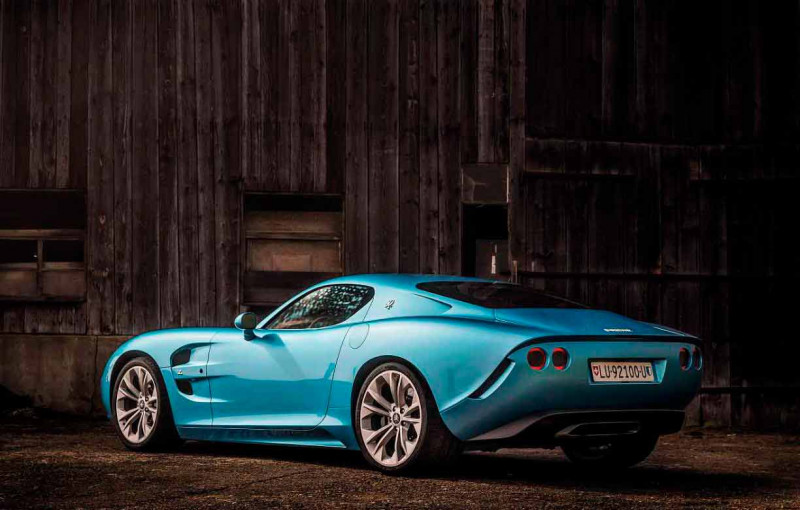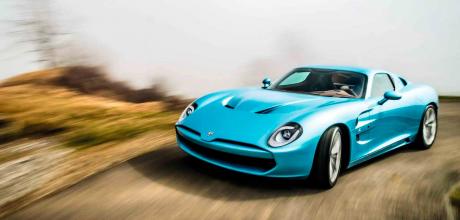2022 ISO Rivolta GTZ - modern-day resurrection of the 1960s A3/C
Modern-day resurrection of the 1960s A3/C. Join Massimo Delbò for an exclusive first drive in the brand-new Iso Rivolta GTZ, a 660bhp, million-dollar sports car inspired by the Le Mans class-winning Bizzarrini A3/C of the ’60s Photography Max Serra.
Reinterpreting perfection
STUNNING ISO RIVOLTA GTZ LEGENDS OF ITALIAN MOTORING BUILD A NEW SUPERCAR
‘THE WHOLE CAR IS A PERFECT MIX OF MODERN DESIGN AND CLASSIC TOUCH’ ISO RIVOLTA GTZ
The young engineer Piero Rivolta inherited the family business Iso Rivolta when his father Renzo died in August 1966. And in 1973 he saw what was coming: the oil crisis would put his business – making fast, powerful, beautiful sports cars – at risk.

He had been raised in a family of entrepreneurs, not especially linked with cars. His father had moved from the timber business to cold storage and refrigeration (hence the ‘Iso’, from ‘Isothermos’) just before the Second World War, and, as the economy grew thereafter, he followed the wealth of his customers into scooters, motorcycles, bubblecars and, in 1961, to sports cars.
The Iso Rivolta GTs married the beauty of Italian styling by Bertone with luxurious interiors and the easy 300bhp capability of Chevrolet’s smallblock V8. Piero Rivolta had developed a deep love for the cars, but had been raised to look ahead and act accordingly. So, in 1973, he sold the Iso Rivolta company to an Italo-American investor, who saw it die only a year later. Rivolta himself moved on, farming for awhile and then taking a sabbatical to do what he enjoyed the most: sailing around the world.

Yet even while he was officially on holiday, Rivolta’s entrepreneurial spirit meant he was never off-duty. He docked in Sarasota, Florida, sensed something special about the place and soon relocated there with his wife Rachele, teenage daughter Marella and young son Renzo, then set up a real estate company. It boomed. So he established a shipyard, having been unable to buy a new sailboat built from the then-novel-material of carbonfibre, and became a partner in a financial business that ended up with the partial purchase of a bank.
By then, Rivolta’s only memories of his car-making past were the Grifo logo he used on his boats and the small collection of cars he’d brought with him from Italy and loaned to the local car museum: an Isetta, an Iso Rivolta GT 350, and the unique Iso Rivolta Varedo prototype. I spent a couple of days as his guest in Sarasota in 2007, while he recalled his memories. We ate steak and drank Tuscan wine, watching the sun set over the ocean. I was listening to this man – a keen poet who has published several books as well as an avid supporter of the Sarasota Orchestra – when he confessed his deepest regret.
‘I’m lucky,’ he said. ‘I’ve lived a fulfilling life: a beautiful family, a daughter and a son I’m proud of, and I lead a successful business. Yet I feel that something linked with Iso Rivolta is missing. It is one of the few unfinished chapters in my life. It was a great company and made special cars. Seeing it going bankrupt, even though it was no longer mine at that point, was a huge personal pain. I would have loved its history to be different.’
Perhaps with the thought that, one day, a descendant would bring the marque back, he bought the Iso Rivolta name during the insolvency proceedings. ‘Maybe one day we’ll have a new Iso Rivolta car, a fast and beautiful sports car,’ he said, on that evening. ‘My daughter Marella is married to Andrea Zagato; maybe something could come from there. But it is their company, it is their work. I don’t want to interfere in any way. This is my personal idea and this is only a chat over dinner.’
Somehow the spirit of that conversation has come to fruition. Now, 14 years later, Iso Rivolta is back with a new model, the GTZ – ‘Z’ for Zagato, the coachbuilder manufacturing it. ‘We’d played with the idea of resurrecting the Iso Rivolta brand for a while,’ says Andrea Zagato. ‘Our main concerns were linked with the emotional involvement we had with the brand. We were worried that personal feelings might make us less impartial in decisions. We aimed to create a car representing the spirit of the Iso Rivolta A3/C and which wouldmatch the racing soul of Carrozzeria Zagato.
The Iso Rivolta A3/C – ‘C’ for corsa, shown for the first time at the 1963 Turin motor show – seemed to be the perfect starting point.’
The sister A3/L – ‘L’ for lusso – was launched at that same show, andwould evolve into the Grifo. Of the A3/C, only two were manufactured and they went on to class wins at LeMans in 1964 and 1965, the latter of which was paired with ninth overall. The A3/C was subsequently developed into the Bizzarrini 5300, designed at Carrozzeria Bertone by Giorgetto Giugiaro and manufactured by Carrozzeria Sports Cars in Modena. It featured a trademark sinuous shape, which has now been remastered for the 2021 GTZ.
‘With the Iso Rivolta GTZ we wanted to stimulate all senses and we are particularly proud of the results,’ says Zagato. ‘The GTZ was penned by Zagato’s long-term chief stylist Norihiko Harada, and has a modern style mixed with some classic touches, directly inspired by the 1960 A3/C, the overall volumes of which it keeps. The performance from the Corvette Z06 powertrain paired with the skills of our craftsmen for the interior and the assembly of the full composite body make the perfect package, recreating in full the spirit of the Iso Rivolta with the extra spice of Zagato’s touch.’
The main differences between the old Iso Rivolta and the new one concern the chassis. The A3/C was designed entirely by master engineer Giotto Bizzarrini, while the 2021 version is based on Corvette Z06 underpinnings.
The homologation costs, testing and development time for a car equipped with a brand-new chassis would have been unfeasible for such limited production as is planned for the GTZ. There will be only 19, referencing the founding of Carrozzeria Zagato in 1919.
‘The Z06 platform is a very good one indeed, probably one of the best platforms for a front-engined car,’ says Zagato. ‘We wanted to start with this technical layout as – except for the one-off Varedo – the whole production of Iso had the engine in the front.’
The very first GTZ is finished in spectacular Azzurro Adria with Senape (mustard) interior. It is based on an automatic Z06, and its beauty doesn’t pass unnoticed even in the stand-offish Swiss city of Lucerne, where I’m driving it. There are several puzzled glances at the traffic lights: is it a Lotus, or maybe an Aston Martin? Then they find out and the name Iso Rivolta evokes memories and curiosity. Meanwhile, I’m surrounded by leather in a perfectly finished and air-conditioned environment, enjoying the low burble of the V8.
As I drive out from the city, the hill roads allow the GTZ to reveal its character. What is immediately impressive is the roadholding – at supercar levels – as well as the strength of the brakes. When entering corners you perceive just a shade of understeer, and no roll at all. All-in weight is around 1600kg, substantial given the lightness of the carbonfibre body panels though quite reasonable by today’s standards for a V8-powered GT. One benefit in comparison to the donor car is the GTZ’s lower centre of gravity and better weight distribution.
The original 6.2-litre supercharged L06 engine has been bored out to 6.8 litres, a real powerhouse, only here it’s let down somewhat by the eight-speed automatic transmission. Despite paddleshift, it’s always a smidgen too late in its decisions and slow to shift from one ratio to the next. If you’re one of the lucky 19, maybe go for the seven-speed manual.
At journey’s end there’s time to absorb all the details of the bodywork, and to appreciate how many of them take their inspiration directly from the original A3/C. From the rear it’s very nearly a clone, while in profile you recognise the volumes and the beltline. The nose is a little different, from some angles recalling the Lamborghini Miura P400, another Bertone creation of the period. The whole car is a perfect mix of modern design and classic touch and it is easy to understand why Andrea Zagato thinks of his chief designer as a genius.
We open the hood to take a look at the engine, a job that requires two people, a dedicated tool and a place to put the panel, once detached. Impractical but beautiful, in perfect Italian style. And then, looking at Marella Rivolta Zagato driving the car away, I see the real spirit of the GTZ. It’s beautiful to look at, refined in every detail and, despite its 310km/h (194mph) top speed, more at ease on the Amalfi coast than the Hunaudières straight. I do not know if Piero Rivolta has bought one for himself (almost all the 19 cars have already been assigned), but one thing is certain: in Sarasota, Florida, there is a very happy man.
‘It’s beautiful, refined and more at ease on the Amalfi coast than the Hunaudières straight’
Left and above The GTZ is based on the Z06 Corvette and evokes the spirit of the Iso Rivolta A3/C, which was also ’Vette-powered and competed with success at Le Mans in 1964 and ’65.
‘There are several puzzled glances at the traffic lights: is it a Lotus, or maybe an Aston Martin?’


